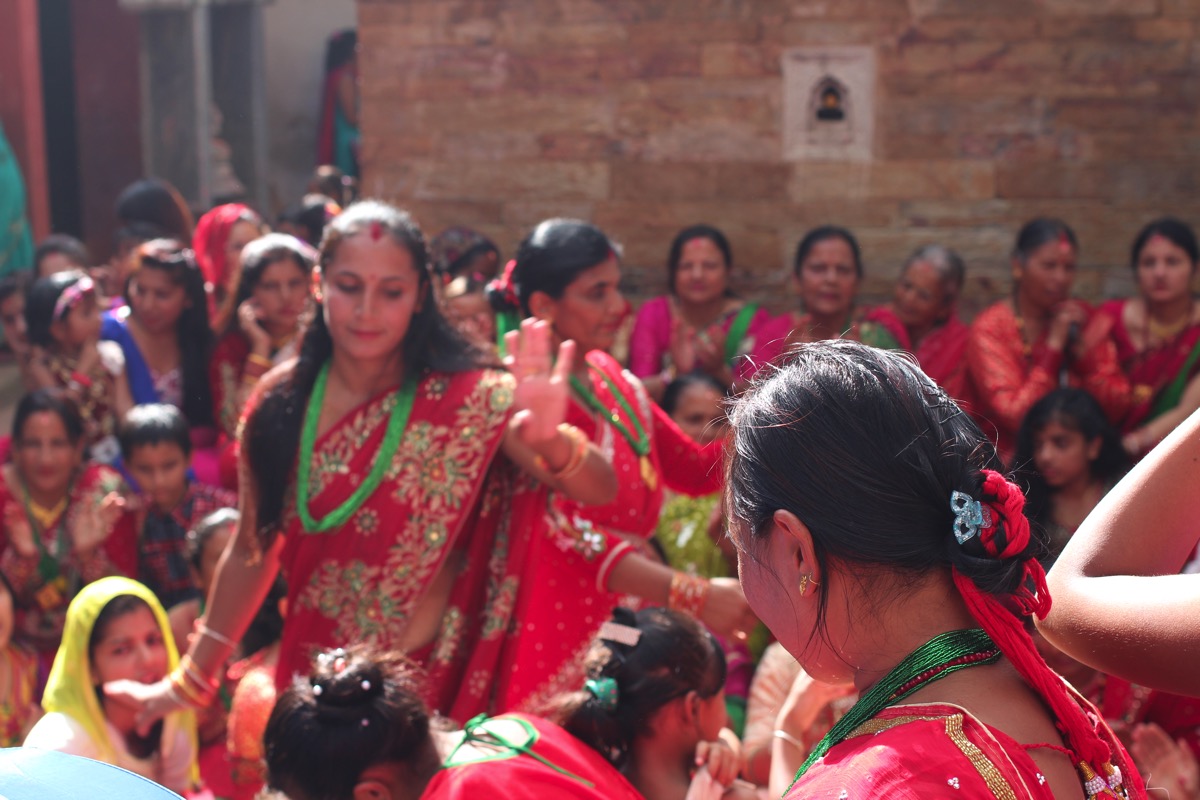
Over the last week Nepal has celebrated the Hindu festival of Teej. This is a womens festival, where girls return to their maternal house, and celebrate with feasting, dancing and singing. Not many festivals in Hinduism celebrate females, so this is special. For the last four weeks there have been dance parties at night, blocking the streets. The festival culminates with a temple celebration featuring dancing and singing and thousands of beautiful women of all ages, wearing their best saris.
The remarkable part is that Teej is the one day where women don’t have to work – men provide the feast and do all the household work. Women are also allowed freedom of expression. This is the day the women can say and sing what they want, even against their husband’s family. Every other day of the year they traditionally must work, and not complain.
I don’t feel I can comment on feminism in Nepal, as I’ve lived here for such a short time, but it is clear that, overall, women are not valued as highly as men. This discrepancy is less in educated, wealthy families, where women can have equal opportunities. However, in poorer families, the discrepancy is more obvious – once they can no longer work, women are a liability. There is little opportunity for self-sufficiency. It is very hard for a single woman, mother or widow somehow separated from family to get an income to survive, for example. Sometimes access to education and medical treatment is a financial decision and gender clearly plays a role.
In the context of these celebration, but coincidentally, I recently took part in a “girls weekend” in Pokhara. An American friend and I shouted a bunch of Didis (sisters) to a holiday trip. These women normally work for us, in our homes and for the hospital. Most of these women had not visited Pokhara before. Many of them have few holidays as we would, and certainly not without dependent children and family.
We had a great time. There were many giggles and laughter. There was considerable distrust of the hotel elevator, which is fair enough because the power is pretty patchy in Nepal and no one seemed sure what would happen if the lift stopped. We went to the big department store, which are uncommon in Nepal, and became tourists for the weekend.
On the last day of our trip we travelled up to Sarangkot – a hill with a remarkably close view of the Himalayas. At 5am we climbed by jeep in the dark to get a sunrise view of the mountains. The mountains get me every time – a view of majesty and might. The mountains are so high they get tangled in cloud, and aren’t visible for all of the day, or even every day. We stood and chatted on the viewing platform for about an hour, the peak of Maccrepuccre tantalising through the cloud. We chatted, and took silly pictures, and before long found ourselves dancing. We ticked off another item on the bucket list we never knew we had – dancing on Sarangkot.
Best wishes to all the successful Nepali women I know – the doctors, the mothers and workers, the home keepers and house Didis, and those who just manage to keep their families together despite all the outside pressure. May you dance forever!
Leave a Reply